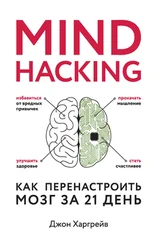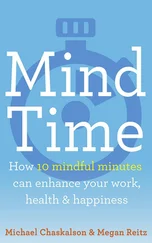Our minds are like that hill. The constant repetition of our negative loops cuts deep mental grooves, and it’s natural for our minds to “lock into” those grooves, even when the negative loops are self-destructive.
The good news is, through repetition, you can cut a new groove . When I take my kids sledding at the hill, we often have to cut a new track, packing down the snow where we want it to go, then physically slowing and redirecting ourselves to the new track. The sled “wants” to lock into the existing groove, but by patiently working the new path we can eventually get the sled to lock into the new one instead.
Through the concentration and writing exercises that you’re practicing, you’re probably already seeing when the mind begins to go down one of those dangerous paths:
Everything I do ends in failure/sadness/embarrassment . . .
I’m a terrible parent/partner/friend . . .
I’m no good at exercise/math/romance . . .
I shouldn’t have said/done/thought that . . .
I’m fat/lonely/hopeless . . .
The sled has started down the hill, but if you develop the skill of noticing it going down this track, then you can develop the skill of redirecting it to a different track, preferably with one of your positive loops.
Everything I do ends in failure . . . but hold on. Some things I do are actually quite successful, like the homemade Transformers outfit I built for Comic-Con last year.
I’m a terrible parent . . . but wait a minute. My son gave me a hug yesterday, out of the blue. Like all parents, I have room to improve, but I’m doing something right.
I’m no good at exercise . . . actually, I have been working out twice a week for the last month, so although it still doesn’t feel natural, I’m getting better.
I shouldn’t have said that . . . but you know what? I’m probably the only one who will even remember it, and I’m growing more self-confident every day.
I’m lonely . . . but the good news is that I just joined a church, I’m widening my circle of friends, and I’m confident I’ll find a loving partner.
You can’t force your mind to stop thinking negative thoughts! If I ask you not to think of your grandparents making love, for example, it will be virtually impossible to stop yourself, particularly if I ask you not to think of them in the freakiest positions imaginable, with a 1970s disco bass line in the background. What we are after is not mind control but mind training . The mind will naturally follow the tracks you have laid down for it over the course of your life, but with effort and persistence, you can redirect it into a new groove.
If your goal is not complete,
Lather, rinse, repeat.
With constant repetition, you can eventually perform what I call “mind judo.” When an opponent lunges at the judo master, the master effortlessly uses his opponent’s natural momentum to throw him off balance. He calmly steps aside and lets the opponent flip himself over. When the mind comes at you with the negative loop, you can use that natural momentum to kick off the positive loop instead.
A drink sure would be nice . . . (flip) . . . except that my sobriety is the foundation of all the good things in my life.
I cannot stand that woman . . . (flip) . . . but I’m free from resentment, and I’m able to live and let live.
I will never get out of debt . . . (flip) . . . but I’ve already come a long way, and I can do it.
Rather than obsess on the things that cause you pain, the mind can now obsess on the things that bring you peace.
To put it another way: Repetition is key.
Repetition Method #1: The $10 Million Check
The actor Jim Carrey grew up so poor that at one time, his entire family lived in a trailer on a relative’s lawn. After school, he would put in eight-hour workdays at a local factory to help support them. 6His childhood was so difficult that he dropped out of high school and, at age twenty-one, moved to Hollywood with the dream of escaping his life of poverty and building a successful career as a comedian and performer.
One night after arriving in Hollywood, Carrey made a critical decision that affected the course of his life, a decision that would bring laughter to hundreds of millions of people worldwide. He drove his run-down Toyota up to the Hollywood Hills and parked where he could see the glittering lights of Tinseltown stretched before him like a blanket of dreams. In his mind, he saw himself entertaining the world through TV and movies. And because he wanted a physical reminder of his success, he wrote it down .
He took out his checkbook and wrote a check to himself for $10 million, dating it ten years in the future. In the memo field he wrote, “For acting services rendered.” He kept the check in his wallet as a constant reminder of his goal. In the years to come, each time he pulled out his wallet to pay for something, there was the check, serving as a visual repetition. As he struggled through failed sitcoms and bad sets at Yuk Yuk’s, there was the check. As he took small supporting parts in movies, there was the check. And as his career began to finally take off in the 1990s, there was the check.
There is nothing mysterious about the fact that a constant reminder of your goal will make you more likely to achieve it . Through that constant repetition of the check, Carrey stayed focused on his goal of becoming a successful entertainer through the inevitable ups and downs of a Hollywood career. As it turns out, though, Jim Carrey did not exactly achieve his goal. Ten years later, he was not earning $10 million per film; he was earning $20 million per film .
Repetition can take many forms. Carrey’s technique was what we might call a reminder repetition : writing your positive loops somewhere you will see them regularly, like your wallet. The word “re-mind,” in fact, literally means bringing it back to mind . You are responsible for creating these reminders for yourself! No one else can do it for you. Here are some good places for your reminder repetitions:
• Hanging on your computer monitor
• Nightstand/dresser
• Computer wallpaper
• Screensaver
• Smartphone background
• Breakfast area
• Daily alarm
• Automated email reminder
• In the bathroom (across from the toilet is ideal)
And in case it’s a little weird to have your positive loops hanging out for friends and roommates to read, you can always encrypt your loop into a code only you understand, hide it in your passwords, or use a photo that represents your goal. Alternately, you could just not care whether they see it.
As I’m writing this, I’m listening to my white-noise soundtrack, where I have recorded myself reading my positive loops, then mixed them into white noise just below the threshold of hearing. Although the research on subliminal learning has been inconclusive, I don’t believe anyone has ever studied the long-term effects of listening to yourself repeating your positive loops thousands of times a day. I’ll let you know what I find.
Repetition Method #2: Don’t Break the Chain
Software developer Brad Isaac started out his career as a stand-up comic. One night he was performing in the same club as Jerry Seinfeld, at a time when Seinfeld’s legendary television sitcom was just starting to take off. Isaac plucked up his courage, approached Seinfeld, and asked if he had any advice for a young struggling comedian.
“DON’T BREAK THE CHAIN,” Seinfeld replied. 7
Seinfeld went on to explain that the way to get better at writing jokes was through repetition , so he committed himself to writing a certain number of jokes each day, whether he felt funny or not. After the day’s joke writing was complete, he marked a large red X for that day on a wall calendar. (It was Benjamin Franklin’s Moral Perfection Project for funny people.)
Читать дальше
![Джон Харгрейв Mind Hacking [How to Change Your Mind for Good in 21 Days] обложка книги](/books/404192/dzhon-hargrejv-mind-hacking-how-to-change-your-min-cover.webp)











